A unified mechanism for intron and exon definition and back-splicing
- PMID: 31485080
- PMCID: PMC6939996
- DOI: 10.1038/s41586-019-1523-6
A unified mechanism for intron and exon definition and back-splicing
Abstract
The molecular mechanisms of exon definition and back-splicing are fundamental unanswered questions in pre-mRNA splicing. Here we report cryo-electron microscopy structures of the yeast spliceosomal E complex assembled on introns, providing a view of the earliest event in the splicing cycle that commits pre-mRNAs to splicing. The E complex architecture suggests that the same spliceosome can assemble across an exon, and that it either remodels to span an intron for canonical linear splicing (typically on short exons) or catalyses back-splicing to generate circular RNA (on long exons). The model is supported by our experiments, which show that an E complex assembled on the middle exon of yeast EFM5 or HMRA1 can be chased into circular RNA when the exon is sufficiently long. This simple model unifies intron definition, exon definition, and back-splicing through the same spliceosome in all eukaryotes and should inspire experiments in many other systems to understand the mechanism and regulation of these processes.
Figures
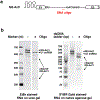

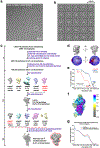
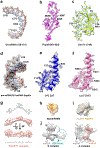

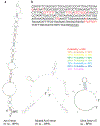

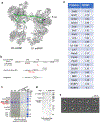






Comment in
-
Intron definition, exon definition and back-splicing revisited.Nat Rev Mol Cell Biol. 2019 Nov;20(11):661. doi: 10.1038/s41580-019-0178-3. Nat Rev Mol Cell Biol. 2019. PMID: 31548713 No abstract available.
Similar articles
-
Structural insights into the cross-exon to cross-intron spliceosome switch.Nature. 2024 Jun;630(8018):1012-1019. doi: 10.1038/s41586-024-07458-1. Epub 2024 May 22. Nature. 2024. PMID: 38778104 Free PMC article.
-
Structure of the yeast spliceosomal postcatalytic P complex.Science. 2017 Dec 8;358(6368):1278-1283. doi: 10.1126/science.aar3462. Epub 2017 Nov 16. Science. 2017. PMID: 29146870 Free PMC article.
-
Detecting circRNA in purified spliceosomal P complex.Methods. 2021 Dec;196:30-35. doi: 10.1016/j.ymeth.2021.02.002. Epub 2021 Feb 10. Methods. 2021. PMID: 33577981 Free PMC article.
-
Evolution of the Early Spliceosomal Complex-From Constitutive to Regulated Splicing.Int J Mol Sci. 2021 Nov 18;22(22):12444. doi: 10.3390/ijms222212444. Int J Mol Sci. 2021. PMID: 34830325 Free PMC article. Review.
-
How Is Precursor Messenger RNA Spliced by the Spliceosome?Annu Rev Biochem. 2020 Jun 20;89:333-358. doi: 10.1146/annurev-biochem-013118-111024. Epub 2019 Dec 9. Annu Rev Biochem. 2020. PMID: 31815536 Review.
Cited by
-
Intrinsic Regulatory Role of RNA Structural Arrangement in Alternative Splicing Control.Int J Mol Sci. 2020 Jul 21;21(14):5161. doi: 10.3390/ijms21145161. Int J Mol Sci. 2020. PMID: 32708277 Free PMC article. Review.
-
The Roles of CircRNAs in Regulating Muscle Development of Livestock Animals.Front Cell Dev Biol. 2021 Mar 5;9:619329. doi: 10.3389/fcell.2021.619329. eCollection 2021. Front Cell Dev Biol. 2021. PMID: 33748107 Free PMC article. Review.
-
Functional Analysis of the Zinc Finger Modules of the S. cerevisiae Splicing Factor Luc7.bioRxiv [Preprint]. 2024 Feb 4:2024.02.04.578419. doi: 10.1101/2024.02.04.578419. bioRxiv. 2024. Update in: RNA. 2024 Jul 16;30(8):1058-1069. doi: 10.1261/rna.079956.124. PMID: 38352541 Free PMC article. Updated. Preprint.
-
Binding by calmodulin is coupled to transient unfolding of the third FF domain of Prp40A.Protein Sci. 2023 Apr;32(4):e4606. doi: 10.1002/pro.4606. Protein Sci. 2023. PMID: 36810829 Free PMC article.
-
Biogenesis and Functions of Circular RNAs Come into Focus.Trends Cell Biol. 2020 Mar;30(3):226-240. doi: 10.1016/j.tcb.2019.12.004. Epub 2020 Jan 20. Trends Cell Biol. 2020. PMID: 31973951 Free PMC article. Review.
References
-
- Berget SM Exon recognition in vertebrate splicing. J Biol Chem 270, 2411–2414 (1995). - PubMed
Publication types
MeSH terms
Substances
Grants and funding
- GM122579/NH/NIH HHS/United States
- S10 OD018111/OD/NIH HHS/United States
- R01 GM129325/GM/NIGMS NIH HHS/United States
- GM121487/NH/NIH HHS/United States
- R01 GM121487/GM/NIGMS NIH HHS/United States
- R01 GM126157/GM/NIGMS NIH HHS/United States
- GM126157/NH/NIH HHS/United States
- GM130673/NH/NIH HHS/United States
- AI094386/NH/NIH HHS/United States
- R21 CA219847/CA/NCI NIH HHS/United States
- P41 GM103311/GM/NIGMS NIH HHS/United States
- 1U24GM116792/NH/NIH HHS/United States
- HHMI/Howard Hughes Medical Institute/United States
- R01 AI094386/AI/NIAID NIH HHS/United States
- R01 GM130673/GM/NIGMS NIH HHS/United States
- CA219847/NH/NIH HHS/United States
- 1S100D018111/NH/NIH HHS/United States
- P30 CA046934/CA/NCI NIH HHS/United States
- R35 GM122579/GM/NIGMS NIH HHS/United States
- U24 GM116792/GM/NIGMS NIH HHS/United States
- R01 GM071940/GM/NIGMS NIH HHS/United States
LinkOut - more resources
Full Text Sources
Other Literature Sources
Molecular Biology Databases

